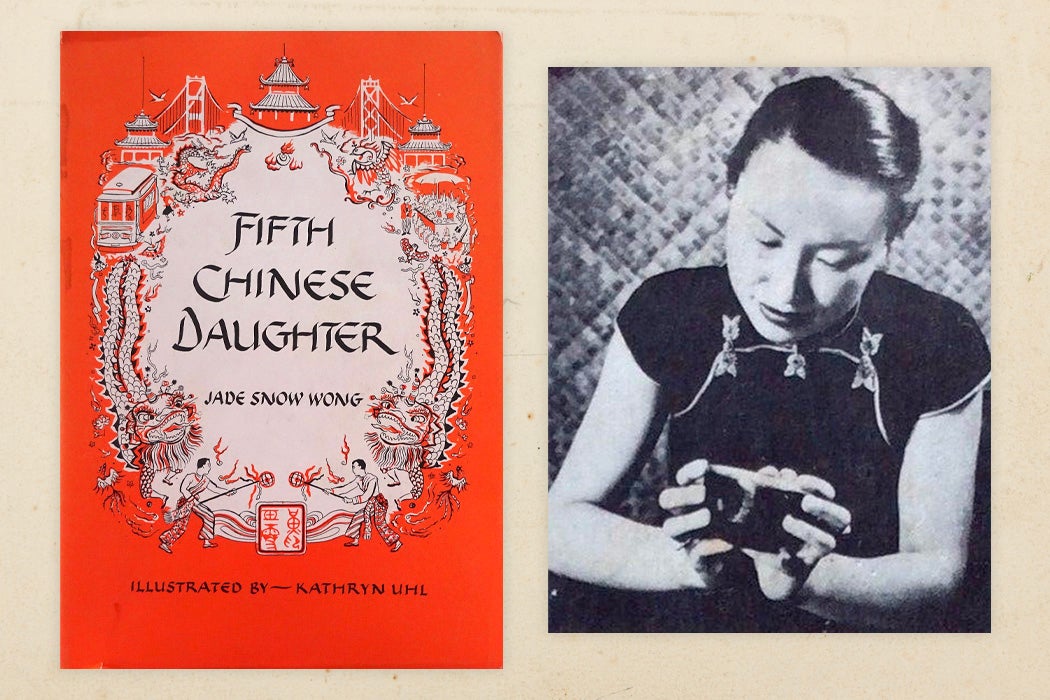Published in 1950, Fifth Chinese Daughter—the first autobiography by a Chinese American woman—was an instant hit with readers, and a success for its author Constance Wong, a ceramicist who was known socially as Connie and professionally as Jade Snow Wong.
The book secured Wong’s legacy in Asian American studies, and, as Ellen Wu observes in the Pacific Historical Review, scholars have come to treat it “as a primary source on experiences of second-generation Chinese Americans in the 1920s, 1930s, and 1940s.”
Wu’s interest, though, lies elsewhere: the historical implications of the US Department of State’s support for Wong’s memoir, which Wu painstakingly documents through consular records, Wong’s papers and writings, and even a conversation with Wong before the author’s death in 2006.
During the Cold War, officials were keen to shore up international goodwill through “cultural diplomacy” such as exhibitions, athletics, and radio broadcasts. When approached, San Francisco-born Wong was eager to headline one such project.
Over four months in 1953, she gave speeches in forty-six Asian cities, promoting what she called “the truth concerning America as I have known it.”
The story that Wong took on tour upheld her achievements as proof of the United States’ successful liberal multiculturalism. For the State Department, this was a key rebuttal to the charge that racial discrimination in the United States undermined its legitimacy.
But Wong’s Chinese heritage served another purpose for American diplomats.
The Chinese civil war had ended with a Communist victory just a few years before, and Wu writes that “discriminatory treatment of Chinese by host societies, American authorities feared, could result in minority Overseas Chinese populations throughout Southeast Asia and the world casting their lot with Communist China.”
With countries that had significant ethnic Chinese populations on the itinerary, US officials hoped that Wong “could offer Malayan Chinese an alternative model of non-communist assimilation” into Southeast Asia’s newly independent, postcolonial nations.
Wong’s tour achieved mixed outcomes for the State Department. For the most part, diplomatic personnel stationed in cities such as Tokyo, Kolkata, and Hong Kong were positive about the turnout and reception of her speeches.
However, the tour also saw hiccups, ranging from complaints about Wong’s Cantonese fluency and “university-level” content, to some audience members’ skepticism about how representative of Chinese American life Wong’s experience was.
“As State Department personnel came to realize, presumed diasporic ties based on shared ancestry were not enough to achieve their objectives completely,” Wu comments.
“Moreover, they belatedly discovered, individuals who were considered (or considered themselves to be) ‘authentically’ Chinese in the American context might be perceived differently by ethnic Chinese in other diasporic locations where they negotiated unique, historically contingent, and complicated processes of racialization and assimilation.”
Weekly Newsletter
Wu warns against inferring that Wong held a “one-dimensional” view of America’s Cold War foreign policy. Chinese Americans were aware that an anti-communist stance was an opportunity to “buttress their claims to full citizenship and participation in American society,” Wu writes, and cultural diplomacy afforded Chinese Americans such as Voice of America writer Betty Lee Sung, artists Jade Snow Wong and Dong Kingman, and the San Francisco Chinese basketball team an avenue to legitimize “long-standing claims to full citizenship.”
But cultural diplomacy schemes also continued to mark Chinese Americans as racial minorities, and even suggested that their loyalties lay with co-ethnics outside the US.
As such, Wu concludes, their high-profile participation in the State Department’s Cold War campaigns “had mixed results, compromising Chinese Americans’ gains in social standing.”
Support JSTOR Daily! Join our new membership program on Patreon today.







